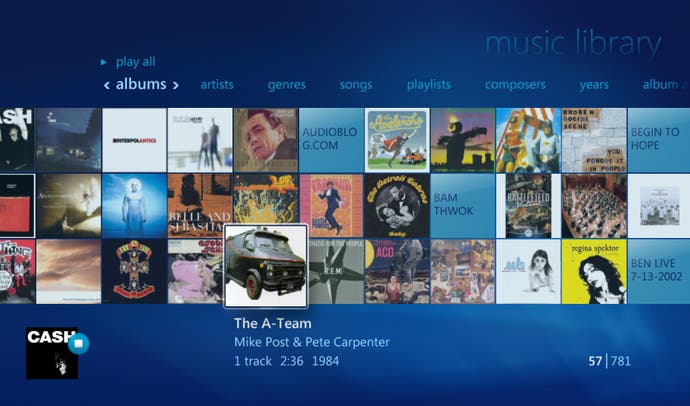Windows Vista
What it means for gamers.
Eventually, though, we should see good art and improved technology breed some jaw-droppingly beautiful children. To play them at their best though, you'll need both a new operating system and a new graphics card. The former you're not going to get your hands on for much less than £150 (that's the upgrade edition of Vista Home Premium - if you don't have Win XP or 2000, you'll need the £220 full edition). The latter - DX10 cards - are currently in short supply, as only NVIDIA has released something suitable, in the form of the £260 and upwards 8800 range. Right now, there aren't even official Vista drivers for the 8800 available - only a leaked beta.
Other, cheaper cards - including efforts from NVIDIA's arch-rival ATI-AMD - will turn up during the course of the year, but right now you'd need to spend at least £410 before you could make your PC DX10-enabled. That's two Wiis, or a complete Xbox 360 with a year's Live sub, an extra controller and a few games, or even a PS3. And for what?
Well, therein lies the rub of it. There are no DirectX 10 games available right now - likely to be the first is a DX10 patch for Company of Heroes due in March. It's an awesome game, but that's a lot of money to pay to make it look better. Due to follow later in the year are the likes of Crysis, World in Conflict, Shadowrun, the Age of Conan MMO and Halo 2. Take a look at the latest Crysis screens and their sheer beauty makes the upgrade seem worthwhile; take a look at the Conan videos and their visual blandness makes it very difficult to understand what the DX10 fuss is about. And Halo 2? Well, it'll have higher resolutions and some sparkly bits, but it's fundamentally the same Xbox 1 game from 2004, and as such is not going to look better - or even as good as - Halo 3 on 360. It's also worth noting again that many of these games - including Crysis - will run in DX9 as well, but with some visual features sacrificed. Until they're actually here, we can't know for sure whether the difference is worth caring about yet. However, the historical precedent set by the GeForce 3's introduction of pixel shader technology back in 2001, and the subsequent glacially slow uptake of it by games, suggests that it'll be at least a couple of years before titles that support DX10's new tech become the norm.

Darting briefly back to point 4 of my cut out 'n' keep DX10 facts, running Vista on any 3D card will mean a risk of reduced performance in DX9 (and for that matter, 8, 7, 6, etc) games.
In some cases, it's completely negligible - Company of Heroes managed 61 frames per second in Vista compared to 65 fps in XP (both OSes were run on same system), for instance. World of Warcraft: The Burning Crusade managed an average of 158fps in XP, but 130 in Vista. In practice, in either case you're not going to spot the difference, but it may become a genuine problem for demanding games on not particularly high-end systems. While I'm here, I should say that if you have less than 1GB of RAM in Vista, you're pretty much guaranteed a performance hit in any game of the last year or two. Even though official requirements state 512MB, Vista is simply ravenous for memory.
OpenGL (a rival tech to DirectX) games fare even worse - Doom 3 lost almost 50fps in Vista against XP. That said, the only recent games that use OpenGL are that, Quake IV and Prey, and only the latter is remotely worthwhile. New drivers from ATI and NVIDIA will address the performance shortfall somewhat (a new 'un from ATI purporting to improve OpenGL performance was released as I wrote this, annoyingly - if I get the chance to run some new benchmarks I'll ask EG's copy-imps to update this piece), but probably not in every case.

There's also a sonic problem - due to a fundamental change in the way the OS and the sound card communicate, the vast majority of pre-Vista games won't have surround sound anymore. It's back to stereo for you, bucko. Not a problem if you're a headphone man, but bad news if you've a crazy speaker rig or beefy soundcard. It can be fixed for many games if you have a Soundblaster X-Fi card, thanks to a Creative app called ALchemy, but if not you're out in the cold until Microsoft changes its mind or you give yourself only to new games.
All sounds pretty bad, dunnit? Well, none of these alone are overwhelming negatives - even together, they amount to an irritation rather than a deal-breaker. Even then, the problems can be imperceptible - I've been running Vista as my primary OS since early December, and it hasn't even remotely troubled my nightly loss of time, energy and personality to World of Warcraft. Whether or not the (essentially minor) problems are ever ironed out, if you're toying with buying a new PC anyway, now that it'll come with Vista, you're getting a much better deal. It's certainly a better operating system than XP in non-gamey respects, and you'll have one stage of the grand DX10 design already accomplished.
A few months down the line, once graphics drivers have become watertight, the DX10 games are trickling out and the 3D cards to play them at their best are plentiful and affordable, it'll be worth seriously considering whether to upgrade your existing machine to Vista. At this moment in time though, I'd be a cruel man to recommend that anyone whose PC is first and foremost for gaming spend £150+ on this new operating system. Ask me again later in the year, and hopefully I'll tell you a different story.


.png?width=291&height=164&fit=crop&quality=80&format=jpg&auto=webp)




.jpg?width=291&height=164&fit=crop&quality=80&format=jpg&auto=webp)
